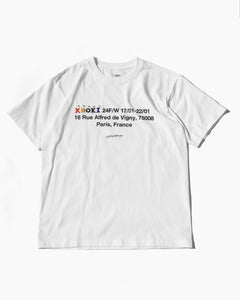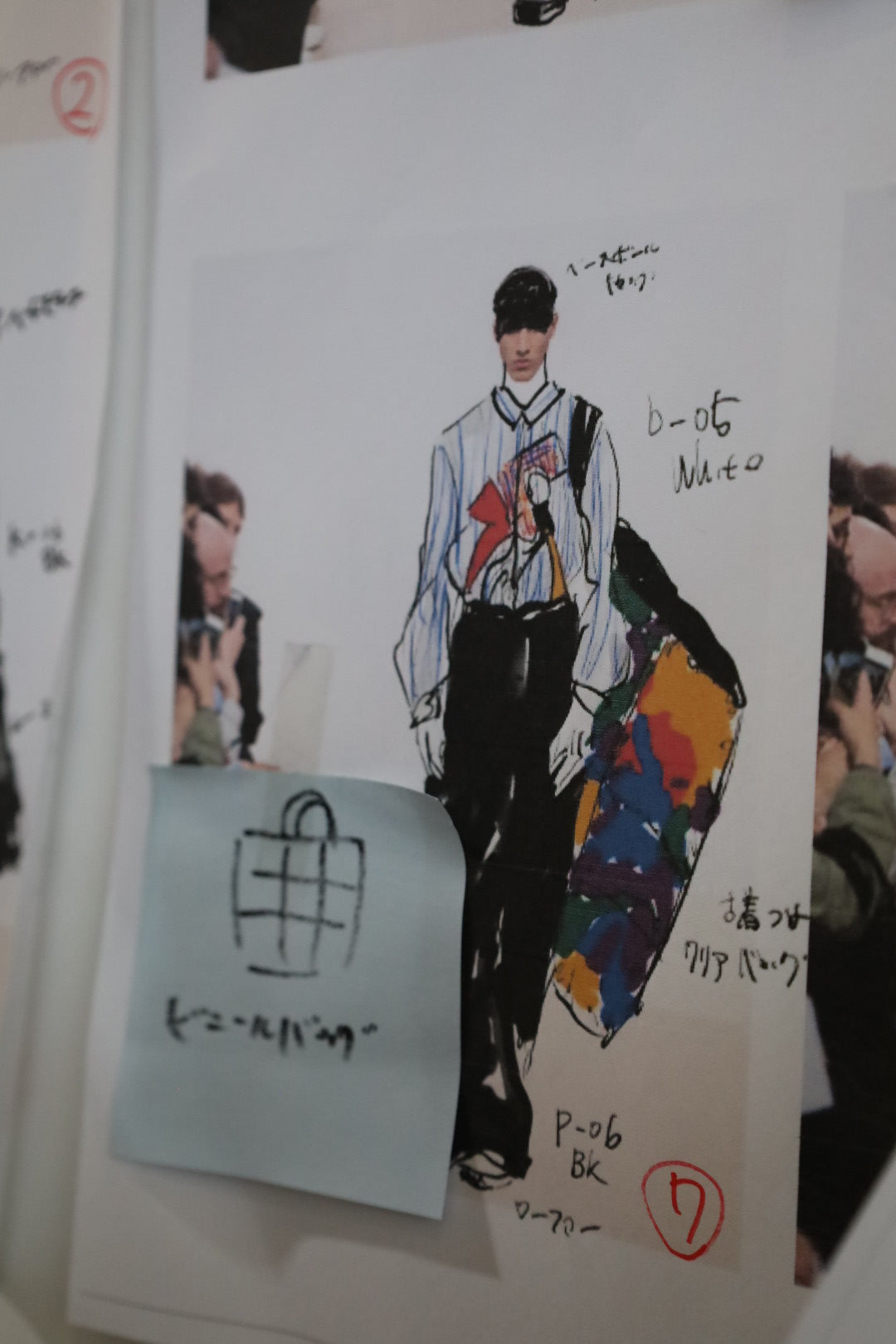Today, I'm writing about KHOKI.
I have a lot to think and talk about the brand, but it's really personal.
So if you are interested in KHOKI, but no time to read long diary, please check out the video of the brand.
Thank you!!
KHOKI Interview
The destination of craftsmanship
by Yuya Sawahata
I heard that Japan was recently recognized as a subtropical country.
*A certain overseas company has started paying a subtropical allowance to business travelers to Japan.
In the sweltering heat of July, I headed to KHOKI's studio.
I can't remember when I first learned about the brand, but as it evolved each season, I became very interested in it.
It was a painful process, like walking around in a sauna, but my heart was dancing.

When starting Anonymous Ism's Shop, the clear concepts were "Craftmanship" and "Story telling." Aiming for the store to be a showcase for introducing new brands and artists, we wanted a brand that would represent the store.
While researching many brands, I became very passionate about KHOKI. Buying jobs don't involve just saying we want to buy something and they'll allow us to buy it, sometimes it's difficult to contact a brand, or even if you do get in touch, they don't respond to you, or the conditions don't match. I wasn't able to get to KHOKI using the straight approach, so I finally got an appointment after following some connections.
So, in January of this year, when I went to Paris for buying for the AW24 season, I saw the KHOKI collection. Now in its 5th year and 11th season, KHOKI's collection was spectacular.

There are many variations of products in the collection, and the silhouettes of each item vary. However, they all provide a great fit. Everything from the vintage processing to the embroidery to the sewing details was perfectly controlled, making it hard to believe that they were made by a small number of people.
As I picked up each item, I felt like asking questions, but the booth was crowded with buyers, so I couldn't do that. The things I was able to talk about in my limited time were innocuous things.
That's how our first contact ended, and I felt I want to talk more!! I suppressed those feelings.
I visited the SS25 collection in Paris in June, and was able to talk with them more than before. However, my time was limited as I had other appointments to attend. Again, I want to talk more! So, when I returned to Japan in this July, I was able to schedule an interview and had the opportunity to visit the studio.
The conversation went back and forth, but time returned to the present (July 2024).
KHOKI's office was located in a room in a building that was reminiscent of the times.

Although it was a busy time to wrap up the SS25 season and move on to production, I was welcomed very warmly. I was surprised that it was a really small number of people.

The studio was filled with samples and mood boards for the seasons.
The thing that caught my eye the most was a board that visualized KHOKI's history since its founding. AW24 will be the 11th season of KHOKI, which started in 2019. This season, the K11 label on the collar of clothes seems to represent the season.
The first photo on the board begins with a mysterious box. The box, which didn't even have clothes on it, became the key visual for the first season, and KHOKI began.
The team all worked on different jobs at the time, and they met in the evenings after work to diligently make the clothes and begun the collection. It gradually spread through word of mouth and grew step by step.
I believe that the reason they have been able to create clothes of such high quality in such a short period of five years is because they have continued to come up with new ideas and take on new challenges each season without making any compromises.
After touring the studio, and once my excitement had subsided, I interviewed the team's director.

KHOKI does not have a main designer.
From designing clothes to creating patterns, factories that make products, and production management. They consider the entire process of a product to reach the customer as design, and share the idea that KHOKI is not just a single designer, but the value created by the entire team.
Still, the team shared several keywords: “Craftmanship,” “Ethnicity,” and “Nostalgic.”
For me, what was most interesting was that, as he searched for something that had an indescribable charm, something that felt sensually good, the word he came up with at the moment was Nostalgic.
I'm going to talk about Anonymous Ism here, but when it comes to branding, we try not to put brand prints on our socks. This is because I felt empathy for the value of anonymous, which was talked about in a book I read earlier by Mr. Naoto Fukasawa, the director of the Japan Folk Crafts Museum, and how I thought that idea was very romantic.
My hope is that someday in the future, when the Anonymous Ism brand disappears and no one knows about its existence, if someone finds our socks and thinks they're good, then it's anonymous.
The word "nostalgic" is a word that makes you look back on the past, but I was thinking during the interview that it's not the same as being old, but rather that people feel this way when it comes to things that have value that extends to the future.
KHOKI's idea of nostalgia is something that has an unfading appeal from the past to the future, and I feel that it is something that connects with Anonymous's consciousness.

Finally, I asked him what KHOKI's goal is.
The answer was to have their own supply chain. This was not a pursuit of business profit, but a determination to continue to express the KHOKI brand and to maintain Craftsmanship.
As was the case all over the world, many factories, secondary processing workshops, and companies involved in clothing manufacturing, including fabrics, have closed down in Japan due to the Covid pandemic. Although some factories still exist, many of the workers are elderly.
After a long period of saturation, respect and appreciation for productss and the people who make them has faded. Due to this background, young people do not want to work in factories or manufacturing sites.
They gradually want to change this current situation and redefine the way people think about manufacturing and sense of values.
With this vision in mind, KHOKI is not a brand that draws attention to a single designer, but KHOKI is the product that everyone creates together, and the value of that product.
Through this interview, I was able to understand why I was attracted to the KHOKI brand. This is because we were able to share many aspects of their goals and the products they created. Craftmanship was the core of Anonymous Ism, and I reconfirmed that it cannot be taken for granted, and that if we don't protect it, it may become extinct, and I wanted to correct myself.

When I left the KHOKI studio feeling as happy as I had reunited with my best friend for the first time in a while, what awaited me was a world of 38 degrees Celsius and 75% humidity...
In subtropical regions, humidity seems to be around 80% all the time, so it might be better.



